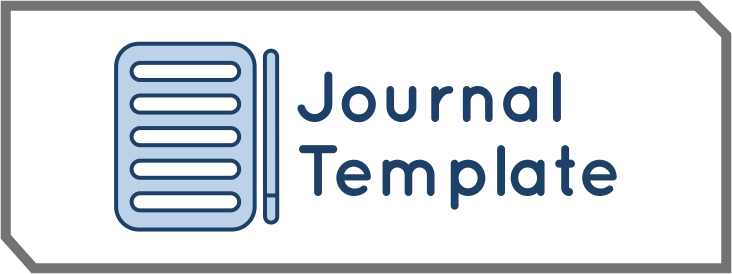The Influence of Scarcity on Flash Sale Against Impulsive Buying and Shopping Enjoyment with Attitude to Wards Flash Sale as a Mediating Variable on Shopee Users
DOI:
https://doi.org/10.55606/ijemr.v3i3.429Keywords:
Scarcity-on-Flash-Sale, Shopping-Enjoyment, Attitude-Toward-Flash-Sale, Impulse-BuyingAbstract
This study aims to examine the influence of scarcity on flash sales on impulse buying and shopping enjoyment, with attitude toward flash sales as a mediating variable. The research was conducted on 130 Shopee customers in Padang City who had previously participated in flash sale programs. Data collection was carried out through a survey by distributing questionnaires via Google Forms. The data analysis technique used is Structural Equation Modeling (SEM). Based on the hypothesis testing stages, it was found that attitude toward flash sales and scarcity on flash sales did not have a significant effect on impulse buying. Furthermore, in the direct effect testing stage, scarcity on flash sale was found to have a positive and significant effect on attitude toward flash sale and shopping enjoyment. The hypothesis testing results also show that shopping enjoyment has a positive effect on impulse buying. Meanwhile, in the indirect effect testing, shopping enjoyment was found to mediate the relationship between scarcity on flash sales and impulse buying.
References
Asadiyah & R. Vania. 2022. “Sikap Konsumen terhadap Flash Sale dan Dampaknya.” Jurnal Pemasaran dan Inovasi, 8(2): 45–51.
Fathia & R. Vania. 2021. “Peran Shopping Enjoyment dalam Pembelian Impulsif.” Jurnal Pemasaran Digital, 6(2): 67–75.
H. Pratiwi. 2022. “Perkembangan E-commerce di Indonesia.” Jurnal Teknologi dan Informatika, 5(1): 34–41.
Hidayat. 2021. “Scarcity on Flash Sale dan Dampaknya terhadap Impulse Buying.” Jurnal Marketing Insight, 13(2): 101–108.
M. Sari & R. H. Anwar. 2021. “Shopping Enjoyment sebagai Mediasi.” Jurnal Psikologi Konsumen Indonesia, 6(3): 115–124.
D. Dsilva & N. Nerry. 2021. “Impulsive Buying Behavior in Flash Sale Context.” International Journal of Business Research, 19(3): 22–30.
D. H. Solomon. 2017. Consumer Behavior: Buying, Having, and Being. 12th ed. Pearson.
D. Santosa. 2021. “Indikator Pembelian Impulsif.” Jurnal Ekonomi Konsumen, 6(1): 21–29.
F. Wijaya. 2020. “Kesenangan Belanja dan Perilaku Konsumen.” Jurnal Ekonomi Digital, 7(1): 63–70.
Ghozali & L. H. Latan. 2015. Partial Least Squares: Konsep, Teknik dan Aplikasi Menggunakan SmartPLS 3. Semarang: Badan Penerbit Universitas Diponegoro.
J. Cialdini. 2007. Influence: The Psychology of Persuasion. Harper Business.
J. F. Hair, G. T. M. Hult, C. M. Ringle, & M. Sarstedt. 2017. A Primer on Partial Least Squares Structural Equation Modeling (PLS-SEM). 2nd ed. Thousand Oaks: SAGE.
K. L. Keller. 2013. Strategic Brand Management. 4th ed. Pearson Education.
Kementerian Komunikasi dan Informatika RI. 2024. “Data Pengguna E-commerce Indonesia Tahun 2020–2024.”
L. Azizah & T. Indrawati. 2021. “Attitude Toward Flash Sale dan Dampaknya pada Loyalitas.” Jurnal Manajemen Strategis, 10(1): 78–85.
L. G. Schiffman & L. L. Kanuk. 2010. Consumer Behavior. 10th ed. Pearson Education.
L. T. Mahadewi. 2021. “Aspek Emosional dalam Pembelian Impulsif.” Jurnal Psikologi, 9(1): 44–51.
M. A. Ghani. 2020. “Scarcity Marketing dan Psikologi Konsumen.” Jurnal Ilmu Manajemen, 11(1): 19–25.
M. Anggraeni. 2022. “Impulse Buying dan E-commerce.” Jurnal Inovasi Ekonomi, 4(3): 99–106.
M. Sarstedt, C. Ringle, & J. Hair. 2014. “Partial Least Squares Structural Equation Modeling.” Journal of Marketing Theory and Practice, 19(2): 139–152.
N. Vannisa, A. Wibowo, & R. P. Putra. 2022. “Shopping Enjoyment dan Attitude sebagai Mediasi dalam Flash Sale.” Jurnal Ilmu Ekonomi dan Bisnis, 9(1): 44–52.
P. Kotler & G. Amstrong. 2018. Principles of Marketing. 17th ed. Pearson Education.
P. Kotler & K. L. Keller. 2016. Marketing Management. 15th ed. Pearson Education.
R. Adi & M. Khairunnisa. 2021. “Sikap terhadap Flash Sale dan Pembelian Impulsif.” Jurnal Ilmu Manajemen dan Akuntansi Terapan, 10(2): 72–80.
R. Febrilia, F. Anggraini, & D. C. Wibowo. 2022. “Pengaruh Promosi dan Harga Terhadap Impulse Buying.” Jurnal Riset Ekonomi dan Manajemen, 4(2): 89–96.
R. Siregar & A. Firdausy. 2021. “Strategi Scarcity Marketing terhadap Impulse Buying Konsumen.” Jurnal Manajemen dan Bisnis, 10(2): 58–66.
S. A. Lamis, A. Firdausy, & R. Lestari. 2021. “Pengaruh Scarcity on Flash Sale Terhadap Impulse Buying dengan Mediasi Attitude.” Jurnal Manajemen Indonesia, 8(3): 112–121.
S. D. Andriani. 2021. “Sejarah Perkembangan Marketplace di Indonesia.” Jurnal Bisnis Digital, 7(1): 23–30.
S. Renita & R. Astuti. 2022. “Pengaruh Shopping Enjoyment terhadap Perilaku Konsumen.” Jurnal Psikologi Konsumen, 5(2): 39–47.
S. Y. Rahmawati. 2021. “Limited Time dan Limited Quantity dalam Flash Sale.” Jurnal Bisnis Elektronik, 4(1): 30–38.
T. Hartanto. 2020. “Shopping Enjoyment dan Website Visit Continuity.” Jurnal Sistem Informasi, 11(2): 87–93.
Top Brand. 2024. “Top Brand Index E-Commerce 2024.” [Online]. Available: https://www.topbrand-award.com
Y. Mulyadi. 2021. “Kepuasan dan Sikap terhadap Flash Sale.” Jurnal Komunikasi Pemasaran, 8(1): 59–66.
Downloads
Published
How to Cite
Issue
Section
License
Copyright (c) 2024 International Journal of Economics and Management Research

This work is licensed under a Creative Commons Attribution-ShareAlike 4.0 International License.







